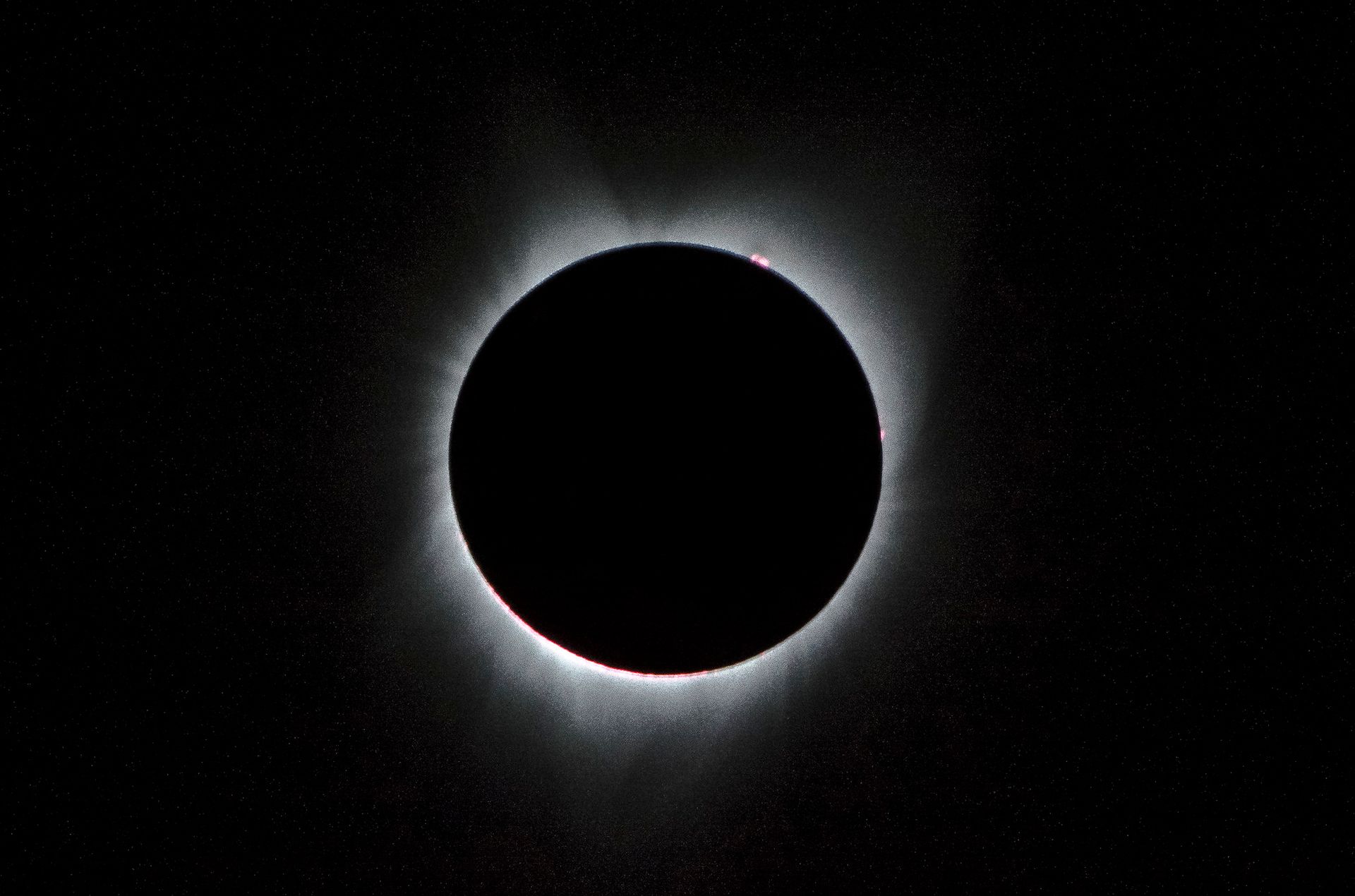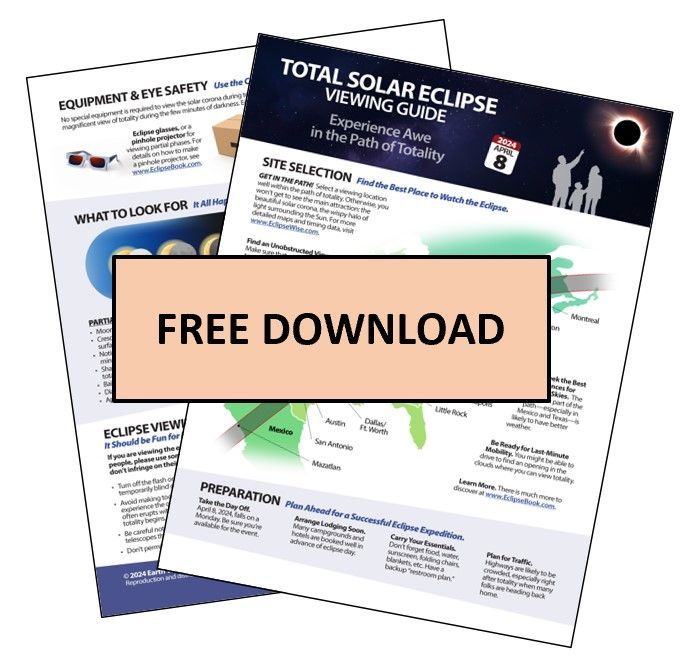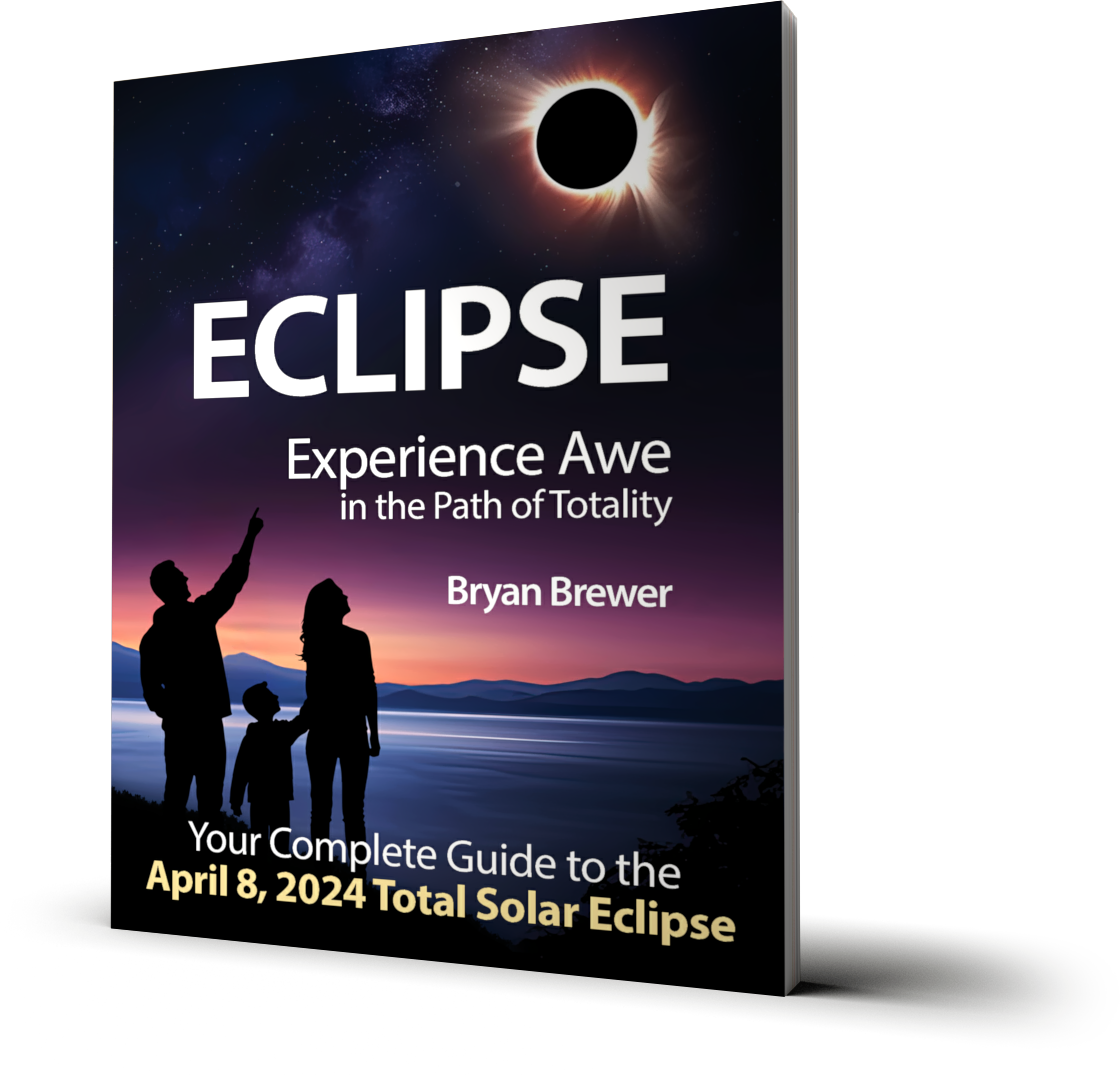The Experience of Awe
by Bryan Brewer
At least 30 million Americans will have the opportunity of a lifetime in the spring of 2024 when the Moon’s shadow sweeps across a 120-mile-wide swath from Texas to Maine, covering portions of 15 different states. Viewers living in this path—provided they have clear skies—will have as long as four minutes to take in the stunning beauty of the solar corona.

This delicate halo around the sun—visible only during a total solar eclipse—is a truly awesome sight. It’s all set to happen Monday, April 8, 2024, and it’s attracting the attention of millions of other Americans, many of whom are planning to travel to be in the path on eclipse day.
Why are people so drawn to witness this most fleeting and beautiful spectacle of all of Nature? I believe it’s an instinctive desire to experience the emotion we call awe. It’s that “Oh, wow!” feeling that overcomes us when we see extraordinary beauty in nature, or hold a newborn’s hand, or hear a stirring musical performance.
Awe—an emotion that was largely neglected by researchers until about twenty years ago—has some distinct benefits. Studies show that awe relaxes our nervous systems, opens our hearts and minds, and fosters a sense of connectedness, both with each other and with the universe.
It’s only natural for people to seek this type of experience (I’ve traveled the world chasing six eclipses), and viewing a total solar eclipse delivers a large dose of what I call total awe in several ways.
At the center of the experience is the magnificent view of the wispy solar corona, the Sun’s faint upper atmosphere. Observers over the past several centuries–both scientists and the populace at large–have described the sublime beauty of this sight using phrases such as euphoric, otherworldly, transcendent, and similar superlatives. Many say that it is difficult to find the words to adequately describe the feelings. Photographs, as striking as they may be, do not do justice to actually seeing the corona in person.
The sudden onset of almost total darkness during the middle of the day is another awe-inducing phenomenon of a total solar eclipse. This unnatural “midnight at midday” has a disquieting effect on humans and nature alike. The dramatic darkening accelerates in the few minutes before totality until at last the Moon’s shadow, or umbra, moving at more than a thousand miles per hour, sweeps across your location on the Earth and plunges you into a brief daytime darkness.New

Seeing this motion of the umbra, along with knowing that you are positioned in perfect alignment with the Moon and the Sun, often gives way to a visceral understanding of the vast physical scale of the event. The Sun (about 93 million miles away) is casting a shadow of the Moon (about 240,000 miles away) across a path on the Earth (no more than a few hundred miles wide) where you, a single individual, are standing.
Finally, the rarity of the experience can impart an expanded sense of time as you recognize the fleeting nature of the moment. A total solar eclipse can serve as a reminder of the arc of one’s lifetime in the context of these regular cycles that have been repeating for millions of years.
As a result, a total solar eclipse can provoke very intense feelings of awe. Many exhibit a renewed child-like sense of wonder, not only about the eclipse but about the world in general. Indeed, witnessing an event on this scale can make you feel very small, and at the same time very connected.
Dr. Dacher Keltner is a pioneering researcher in the science of awe, and is the author of AWE: The New Science of Everyday Wonder and How It Can Transform Your Life. To learn more about awe and view videos of Dr. Keltner's talks, visit https://www.dacherkeltner.com/
Sign Up for News & Events to get the Free Total Solar Eclipse Viewing Guide
- We won't share your email
- You can unsubscribe at any time



